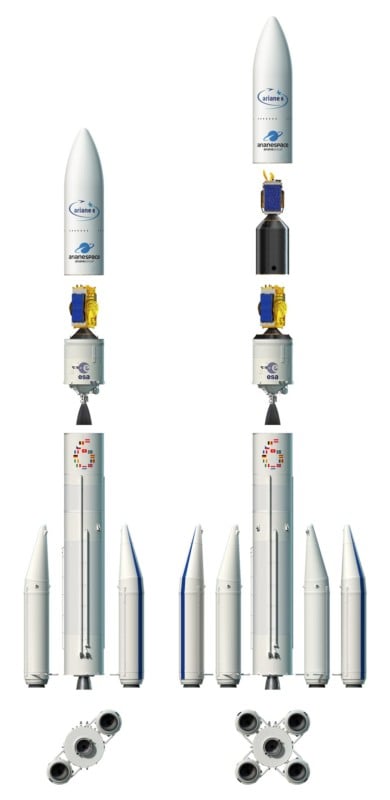Watching any Milky Way timelapse is almost always an awe-inspiring experience, but add in the stellar location of the European Space Agency’s (ESA) Ariane 6 rocket launch site and you’ve got a recipe for something truly special.
As Digital Trends reports, the agency is currently preparing for the arrival of Europe’s next-generation launch vehicle. The above starscape-filled timelapse was filmed around the launch base in French Guiana and lets you “imagine yourself stepping out of the launcher assembly building or standing on the launch pad in front of the 90-meter high mobile gantry, to look at the stars.”
The video opens with a breathtaking view of the Milky Way before shifting gears and showing off several of the night scenes around the ESA’s launch site in South America where Europe’s next-generation heavy-lift rocket will soon lift off from. Comprised of two versions, the Ariane 6 is a modular three-stage launcher (Solid-Cryogenic-Crogenic) and is configured with an A62 with two strap-on boosters and an A64 with four boosters. The entire Ariane 6 sits at just over 60 meters tall (196.85 feet), which is just about the same height as SpaceX’s Falcon 9.
The European Space Agency says the new rocket will weigh nearly 900 tons when launched with a full payload that is “roughly equivalent to one-and-a-half Airbus A380 passenger airplanes.” The video below shows what this launch mission should look like once the rocket finally gets started.
According to the ESA, the launch of the Ariane 6 is comprised of three stages: the two or four strap-on boosters, a core stage, and the upper stage. The core stage propels the Ariane 6 for the first 10 minutes of flight where either the two or four boosters will provide additional thrust at liftoff. The upper stage will be powered by the re-ignitable Vinci engine allowing the Ariane 6 to reach a range of orbits on a single mission to deliver more payloads, with the upper stage burning up two or more times to reach the required orbit. Once the payload has been separated, the rocket will burn a final time to deorbit the upper stage to mitigate space debris.

Sitting at the top of the rocket is the 20 meters (65.6 feet) tall and 5.4 meters (17.7 feet) diameter Ariane 6 fairing which will contain the various payloads and protect them from any thermal, acoustic, or aerodynamic stress during the ascent to space. This section has only recently arrived at the launch facility and will undergo a series of tests before its maiden voyage into outer space. While the rocket was initially scheduled to launch back in 2020, multiple delays — including some caused by the global coronavirus pandemic — have caused the mission to be pushed back until the spring of this upcoming year (2022).
No comments:
Post a Comment